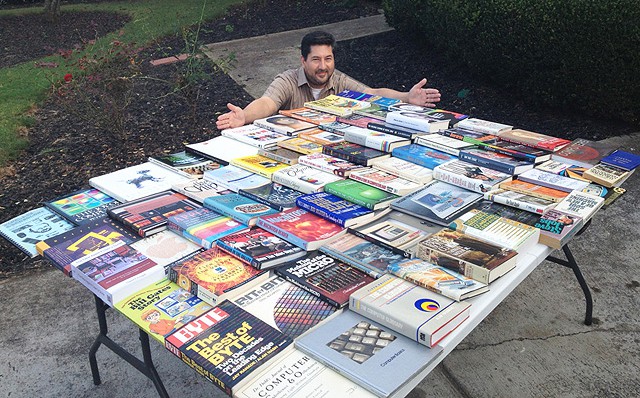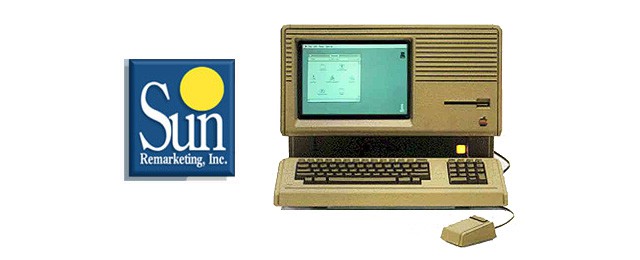Apple is all about the latest and greatest, inventing (and selling) the future. The computer marketplace as a whole evolves with ever accelerating speed – that two year old iPhone or laptop, so passé. Sometimes its helpful to take a step back and appreciate the long view of computing.
David Greelish is a computer historian who has been studying vintage computing for many years, as a writer, collector, podcaster and now vintage computing festival sponsor. His journey has included playing Star Trek text adventures on teletype machines, rescuing orphaned Lisas and Commodore 64s from unloved futures, and lobbying Apple to create a visitor’s gallery of company history in their new corporate HQ. He’s still getting flak for that last one.
Cult of Mac contacted David to hear his story.
COM: So you’re a professional Computer Historian by trade?
I am indeed a professional computer industry historian; I have so declared it. I didn’t refer to myself as a Computer Historian in print or in my email signature until a few years ago, although I have thought of myself as such for many years. I felt it might be too bold or that someone might question my credentials, but I finally gave myself permission. I believe that I am as qualified and as “real” a Computer Historian as any other person today. I don’t have a college degree in computer history, but as far as I can tell, there is not such a thing.
I have been reading and studying computer history now for over twenty years. I estimate that I have read no less than sixty books on the subject, not counting audiobooks, magazines, textbooks, on-line articles, interviews, videos and ephemera. I have roughly eighty books and a hundred or so magazines in my own library. It’s an interesting parallel too, that the earliest computer scientists, engineers and programmers did not graduate from a formal computer science curriculum but rather were mostly electrical engineers. Many were later pulled from other disciplines like Art, Economics, Philosophy and more.

COM: How did you get started working with retro bits and bytes?
I’ve always really enjoyed history, and especially cultural history. As a child, I loved reading about mechanical innovations of the 20th century, especially transportation related ones like cars, planes, ships, submarines, zeppelins, rockets, etc. I also found old appliances and toys interesting, and I ate that stuff up in anything printed, and then later on the internet. One of my favorite blogs now is RetroThing.com.
My initial interest in computers was born while in the fifth grade, my class visited a university computer lab in my hometown of Jacksonville, Florida. It was 1975 and the computer was a mainframe, which we never saw. This computer lab didn’t have video displays, all of us kids were sat down in pairs at teletype printer terminals. Suddenly the lab came alive as all of the printers started printing messages welcoming us there. Then we were introduced to the main attraction, getting to play a game of “Star Trek!” This Star Trek game was text-only, played one slow move at a time, on clanky, giant “typewriters” . . . but boy was it fun.
It almost seemed like magic
that this device could interact with us.
It almost seemed like magic that this device could interact with us. This was at a time when even the simplest Pong home video games were just coming on the market, and there were no computers at school or in the home. That was a significant event in my life, and from then on I knew that I would one day work with computers.
As a young adult in college I wanted a Mac more than anything, but I couldn’t afford one. I knew the Mac was the future, and I loved it so much that I got a job at the local Apple dealer. But even with an employee discount as a poor college student I still couldn’t afford an entry-level Mac Plus, which when coupled with an external 20 MB hard drive would have been about $1800. Then one day a guy brought his “Mac” in for repair. This computer looked like some kind of strange over-sized Macintosh, so I got up to check it out.
It turned out that the computer was an Apple Lisa 2. I was just completely fascinated by it and I wondered why I had never heard of it before, so I began researching it in earnest. I learned a little about its history, but more importantly, I learned that I could buy one as new old stock and that it ran the Mac operating system. It was functionally a big Mac Plus!

The company that sold them was called Sun Remarketing, and I ended up purchasing my first “Mac” in December of 1989 for $1095. It had 1 MB RAM, 20 MB hard drive and booted Mac System Software 6.0.2 by way of a Lisa program call MacWorks Plus. I was in heaven, I loved that computer and it was the platform that I learned to do desktop publishing with.
COM: That was officially called the Macintosh XL. I remember Sun Remarketing. They were around for quite a while, and were the last hurrah for the Lisa after Apple dumped the remaining unsold stock in a landfill. [cue mournful sigh…]
![Remembering Our Digital Past With Computer Historian David Greelish [Interview] Greelish-Montage.jpg](https://www.cultofmac.com/wp-content/uploads/2012/10/Greelish-Montage.jpg)

